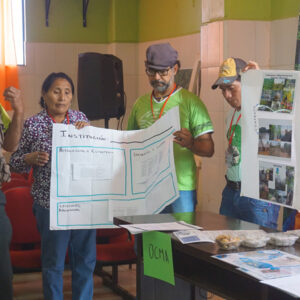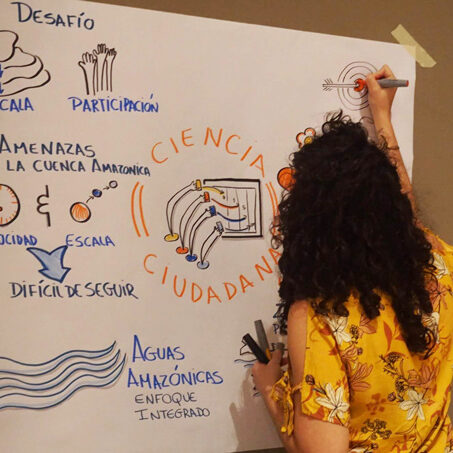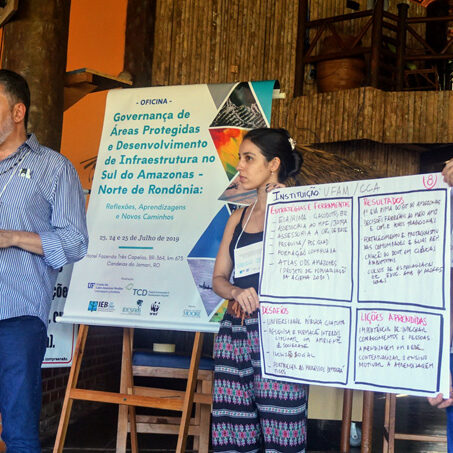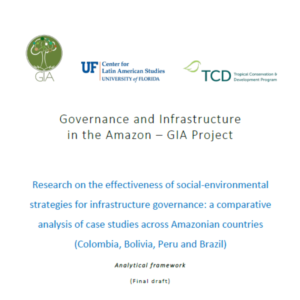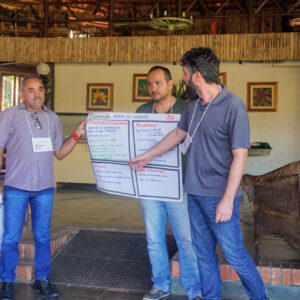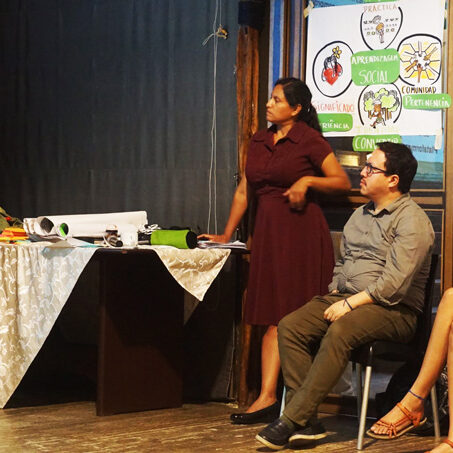Participatory Mapping
The Participatory Mapping analysis assesses how geospatial datasets enable the comparison and understanding of areas of key value, concern and recommended actions within GIA's Community of Practice and Learning.
Faculty Coordinators: Eben Broadbent, Angelica Almeyda Zambrano, Bette Loiselle and Andrea Birgit Chavez.
GIA Students/Researchers/Co-leaders: Carla Mere, Eduardo Bongiolo, Felipe Gutierrez, Gabriel Cardoso Carrero, Marliz Arteaga, and Vanessa Luna Celino.
The GIA Working Group on Geospatial Research and Participatory Mapping has been meeting regularly since March 2019 and has developed a participatory mapping exercise which was implemented during four regional workshops in the mosaics of Loreto-Peru, Southern Amazon/Northern Rondônia -Brazil, Upper Madera - Bolivia, and Colombian Amazon - Colombia. The exercise served as a stakeholder interactive mapping approach to identify from a personal or institutional perspective (a) areas of concerns stemming from infrastructure projects, with particular interest for areas in and around protected areas, (b) areas of value characterized by biophysical, social, cultural, economic, and holistic attributes, (c) recommendations conducted or addressed by each regional institution and stakeholder, as well as identified needs and/or opportunities. A total of 117 stakeholders attended these workshops, which included representatives of the governments, non-profit organizations (NGOs), grassroots organizations, indigenous and traditional communities, and academia.
The group has been working on an academic manuscript based on the workshop exercises. The analysis employs textual and spatial analysis and shows how participatory mapping can be used as a tool to visualize and reflect on (1) areas of value, (2) areas of concern, and (3) recommended actions in the context of a Community of Practice and Learning (CoP-L) aimed at reducing infrastructure impacts and supporting governance processes in Amazonia. The study will further shed light on the strength and weaknesses of the participatory mapping approach in this exercise and with implications for infrastructure and other environmental governance projects in Amazonia and elsewhere. We believe that by sharing local-knowledge-driven data and strengthening multi-actor dialogue and collaboration, this novel approach can improve day to day practices of CoP-L members and improve the transparency of infrastructure planning and good governance.
Other Activities of the Group
The group has developed a one-day 8-hour drone capacity building workshop focused on monitoring and evaluation of infrastructure governance in the Amazon in each mosaic. The training has been done in three mosaics (Loreto-Peru, Southern Amazon/Northern Rondônia -Brazil, and Upper Madera-Bolivia) in 2019 and trained participants on drone use, development of automated flight plans, post collection analysis of data, with a focus on imagery and videos for monitoring and governance.
ArcGIS Online Interactive Platform
We developed an ArcGIS online interactive map platform that integrates all data obtained during the map exercises. The maps below include each geographic feature (represented by polygon shape files) drawn by each participant carefully digitalized in the concern and value layers. Results of the participatory map exercise are distinguished by macro-region (mosaics).
To facilitate the visualization at the beginning, some layers are only visible when the map loads and when selected. Scroll through the layers and select the layers you want to see by opening the layer tab (second button under the map name). Some additional layers are available for comparison such as roads, rivers, deforestation, and other. You can also open the legend tab (first button under the map name). To analyze the content, click on the map and explore each shape file by clicking on the points. Explore the interactive mapping platform!
Stakeholders and GIA Team during a participatory mapping exercise.


